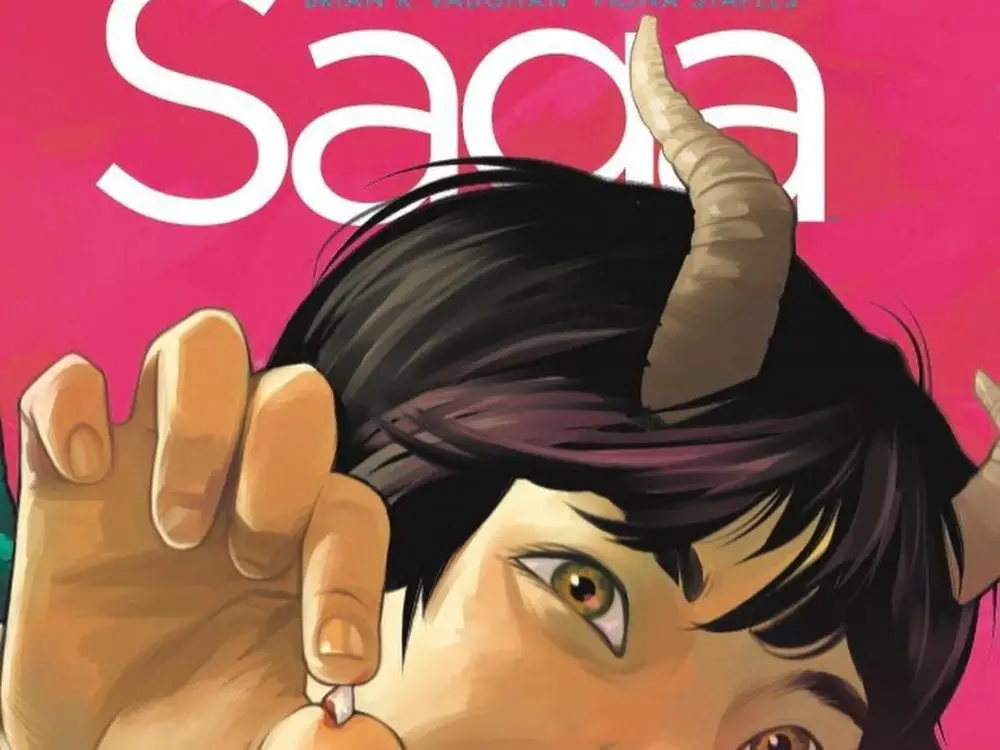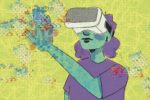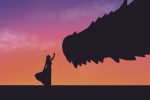When “Saga” first came out in 2012, it was all the rage. Within only a few months, the shelves were empty, and fans could not seem to get enough. In Brian K. Vaughan and Fiona Staples’ space opera and fantasy universe, the two political forces from Landfall and Wreath are set on destroying any evidence that their two civilizations can coexist well enough to intermarry. The tale follows the story of Hazel, the narrator, as she tells the story of her star-cross lover parents on the run from bounty hunters bent on their capture. At first, Hazel is only a baby, and she is assumed to be narrating the story from a point in the future. The other two protagonists are the horned Marko, from Wreath, and the winged Alana, from Landfall. As the series progresses, the relationship between Marko and Alana develops, and Hazel grows older.
Vaughan and Staples’ original plan for the series was to publish 108 issues, and in 2018 they hit the halfway point. The existing issues are currently organized into nine volumes, or two omnibus editions. After leaving fans hanging in the 54th issue with a shocking cliffhanger, Vaughan and Staple announced a hiatus while they figure out the next best move for the series. Many fans are waiting eagerly for the series’s return. Even so, nearly three years have passed, and no word has been given as to when it will return.
https://www.instagram.com/p/CKWtrjRhqLr
In January of this year, co-creator Vaughan wrote in an Instagram post, “Yes, Fiona and I are still hard at work on Saga, and we remain hugely appreciative of the four of you left who haven’t completely lost patience with our extended intermission. Hard to believe as it may seem, I promise these new issues will be worth the wait.” As the series moves into its second part, fans — new and old — should be aware of the legacy “Saga” has left in order to fully appreciate the new material once it is released.
The Cover Controversy
“Saga” has enjoyed long-standing popularity since its release, largely due to its exciting premise, detailed artwork and graphic depictions of sex and violence. When “Saga” was first released in 2012, it quickly climbed the ranks of best-selling books. Even so, it has not been without its share of controversy.
“Saga” remains one of the few comic books to enter the breastfeeding discussion, as it features one protagonist, Alana, feeding her child on the cover of the first volume. When this cover was released, illustrator Dave Dorman sparked a discussion when he posted his opposition in his blog, stating, “It seems that in today’s desperate-for-sales comic book market, nothing is sacred.” From here, Vaughan and Staples decided to defend their decision to feature the image of Alana, as comic books are well-known for their often-explicit depictions of women’s breasts on covers.
According to Russ Burlingame in his article on ComicBook.com, in response to the content, Apple and ComiXology decided not to run issue 12 of “Saga.” Burlingame also noted that “On Tuesday and early Wednesday [after the decision was made to not run ‘Saga’ through Apple’s mobile store], a number of retailers reported that they would not be carrying the issue, citing concerns that they might face prosecution for obscenity if they did.”
Much of this confusion originally surfaced because there still exists a giant misconception that all comic books are for children. Those who were originally the most vocal about censoring the books were concerned about “Saga” being marketed to younger audiences, when in reality this was never the case. From its initial launch, “Saga” has always been marketed as a comic for “mature” readers. Moreover, Vaughan and Staples took offense that — despite the amount of sexual and violent content within the comic — those who were against the novel chose to “ban” the book because of breastfeeding, an act that the authors believe is not sexual, violent or offensive enough to be censored.
In response to this controversy, Vaughan and Staples decided to respond to the complaints over their volume one cover by featuring a breastfeeding Alana once more on the cover of their first book. Behind this decision, Vaughan states that “we’re doubling down on our breastfeeding stance. If your store doesn’t like that cover, if you don’t want to read a book with that cover, then we’re not the book for you.”
Is “Saga” Worth the Read?
Regardless of the amount of push-back the series has seen, “Saga” remains one of the most loved comic books in the United States. In 2013, “Saga” won the Harvey Awards after they previously took home three Eisner awards. In 2014, Vaughan won the best writer prize and Staples won the best painter prize. “Saga” also won the 2013 Hugo award for best graphic story, a prestigious award that only the best science fiction wins. The comic was second place on the 2019 Top 100 Best-Selling Graphic Novels list, and it has enjoyed high rankings for the past several years.
Aside from the number of awards this series has won over the years, “Saga” showcases unique characters, intriguing storytelling, breathtaking artwork, witty dialogue and handwritten narration. The story balances its emotion and action well, and the characters are easy to become invested in as the story progresses. Despite the problems within the universe itself, there is no clear antagonist, as nearly every major character is explained and given sufficient backstory to develop.
Moreover, “Saga” has a lot to say about divided societies and the power of family within these political structures. The series also showcases characters of varying races, sexual orientations and socioeconomic classes, making it appealing to both active and passive readers. There is action and violence aplenty, and the love story is adorable.
During the hiatus and the pandemic, many people have fallen away from the fanbase, but it should pick up again soon. Even if there is still no clear date, Vaughan has assured fans that the new material will be worth the wait. It is important that longtime fans continue to watch for the new releases and that the fanbase invite new audiences to the community.

















